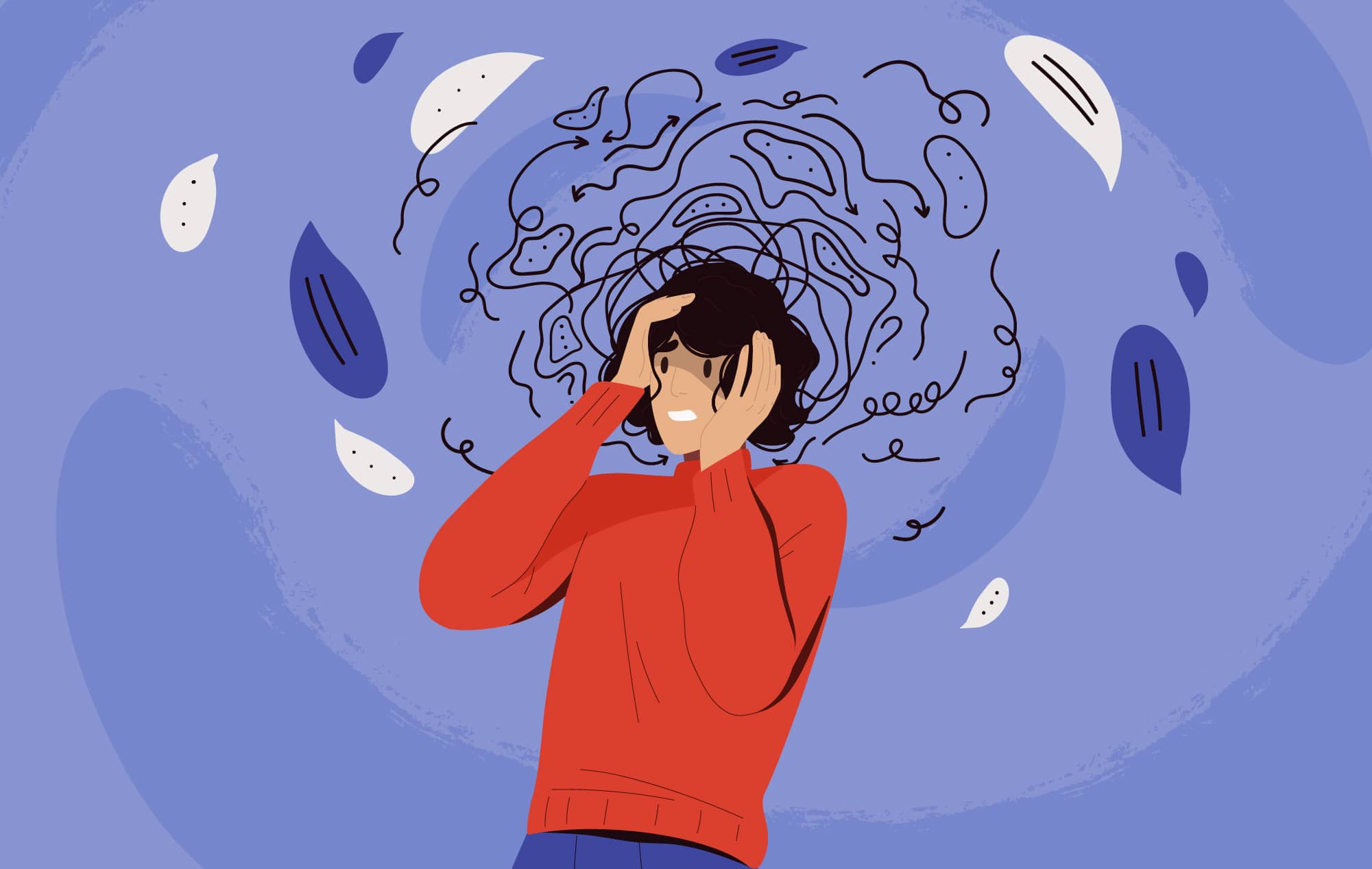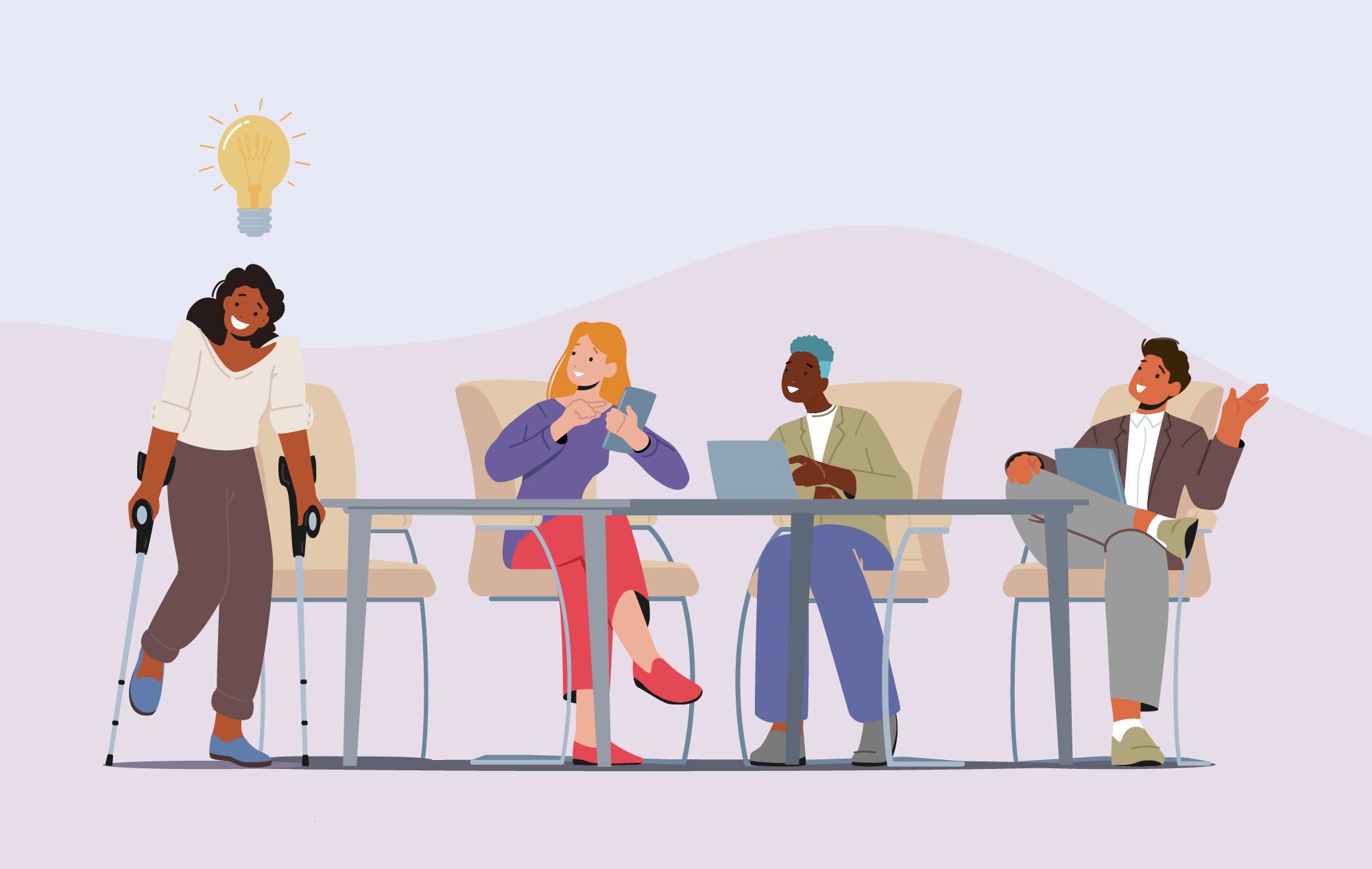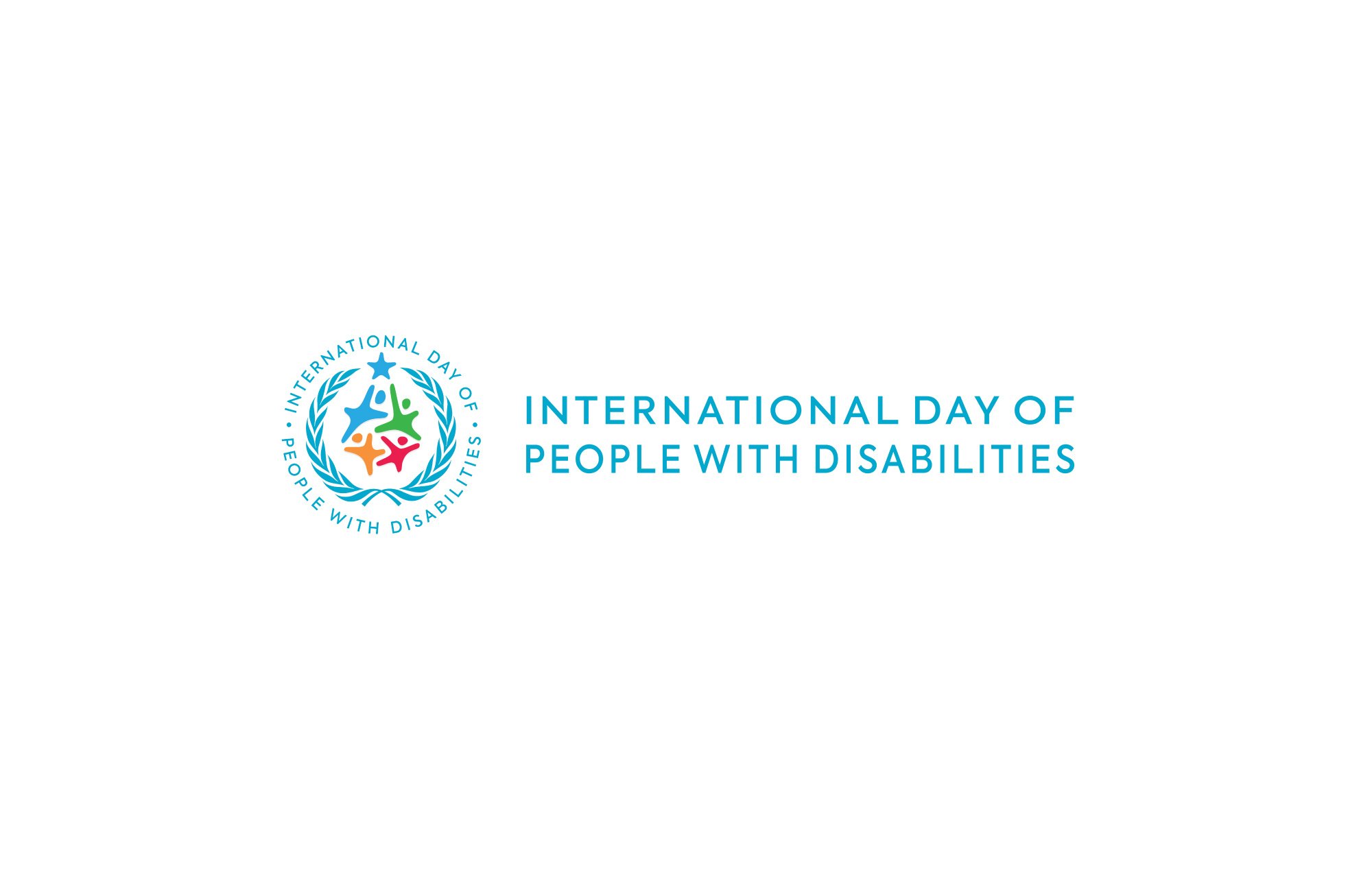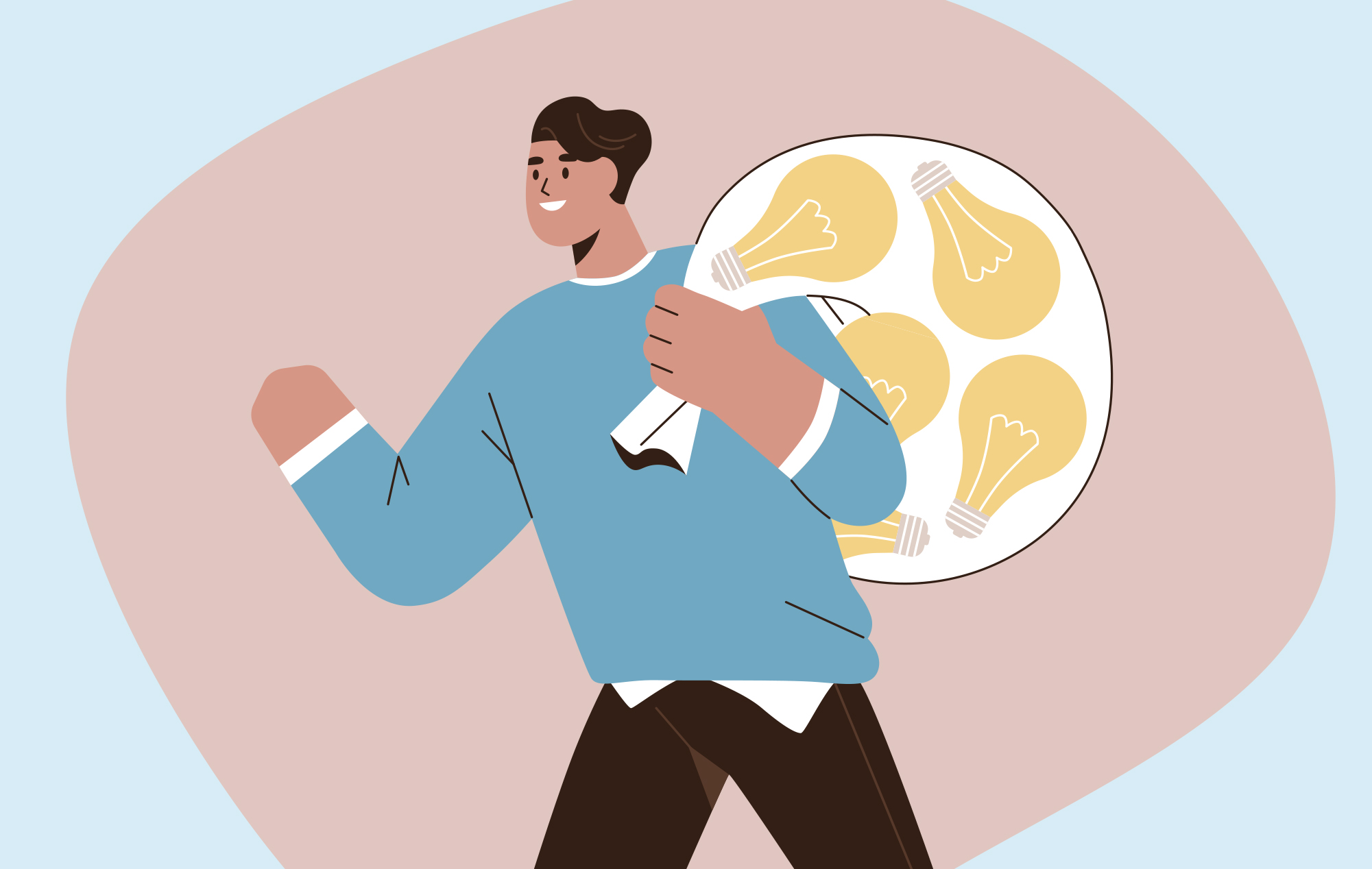Albert Kim’s accessibility journey began at birth. Raised by his single mother following her divorce and escape from domestic violence, he spent his middle school years in South Korea before attending high school in Vancouver, and ultimately, college in Los Angeles.
Throughout his upbringing, Kim experienced severe symptoms of what would ultimately be diagnosed nearly two decades later as several mental health disabilities—such issues considered taboo in his culture and never discussed, nor addressed, due to extreme stigma.
“For that whole time, I couldn't perform right in my daily work or job, and I couldn't really carry on my daily responsibilities,” the a11y advocate, now in his 30s, tells InclusionHub. “When I look at my friends or colleagues, they're doing really well. I'm like, ‘Oh, wow.’ And I'm not. Then I compare, and I think, ‘Oh, I wish I could perform like them as well.’”
Due to such stigmatization, Kim had never even heard the term “mental health” until living in Canada, and upon discovering the concept of digital accessibility years later while pursuing computational neuroscience at the University of Southern California, became intrigued. The more research he conducted into improving access and inclusivity on the web for those with similar experiences to his, however, the more he realized that few resources existed, and how much more needed to be done.
“Traditionally, we've only focused on accessibility for physical disabilities, like blindness, or d/Deaf, or motor disability, but not really on invisible disabilities, like cognitive and learning disabilities, or mental health disabilities,” he explains. “It has not been really thought about, so even WCAG guidelines, Web Content Accessibility Guidelines, focus a lot on the physical disability side—but there aren't too much guidelines for the specific mental health disabilities that exist.”
Global ‘Mental Health Crisis’ & ‘Second Pandemic’
Kim is not alone in his struggles with mental health disabilities, nor his quest for a more inclusive and accessible web.
Eventually diagnosed with attention-deficit/hyperactivity disorder (ADHD), dyslexia, obsessive-compulsive disorder (OCD), depression, anxiety, and post-traumatic stress disorder (PTSD), he represents tens of millions of people in America—nearly an estimated billion worldwide—living with any number of mental health issues. Far too often, they never receive the diagnosis or treatment required—and similar to others within the disabled community—face tough digital barriers regarding accessing products and services via the web.
The coronavirus pandemic forced hundreds of millions around the world into social isolation, exacerbating addiction, depression, feelings of loneliness and anguish, financial instability, and many other significant and still-manifesting psychological consequences.
Such unprecedented physical disconnection from each other also underscored the importance of meaningful digital accessibility and inclusivity, as the personal and professional daily activities of countless people moved online.
“All websites should be accessible to everyone,” stresses Kim. “Because number one, during COVID, the digital transformation has gotten accelerated.”
Yet the United States had been weathering what experts, advocates, and world leaders declared a “mental health crisis” long before COVID-19 turned the world upside down, with key indicators signaling several ever-alarming trends.
According to the 2022 insights of an annual national assessment by nonprofit Mental Health America (MHA) titled “The State of Mental Health in America,” nearly 20% of U.S. adults experienced a mental illness in 2019—representing about 50 million people. Suicidal ideation, defined as thoughts or desires to end one’s life, continued to increase, the analysis continues, a disturbing trajectory ever-rising since 2011. Large numbers of American children experience major depression, it states—with more than 2.5 million suffering “severe” depression affecting functioning, and multiracial youth disproportionately at the greatest risk. Among American adults living with a mental illness, MHA’s study reports more than half go without treatment—accounting for more than 27 million people.
The ever-emerging manifestations of COVID-19’s psychological tolls are now deemed a potential “second pandemic” by health experts, with such disorders as those affecting Kim often referred to as “invisible disabilities” due to their inherent neurological nature and the reluctance of those afflicted to share such information, due to the profound stigma attached, as in his case.
In this vein, explains Kim, the global guidance for enhancing digital accessibility and inclusion—set forth in Web Content Accessibility Guidelines (WCAG)—focus overwhelmingly on addressing obstacles for those living with physical disabilities, such as the blind or low-vision, d/Deaf or hard of hearing, and others, while much more needs to be done in additionally tending to the unique needs of those with mental health disabilities.
Kim has dedicated his life to improving accessibility for people with mental health disabilities. He also serves as the accessibility lead at Los Angeles-based global consultancy firm Korn Ferry, an accessibility and DEI champion specializing in neurodiversity and mental health advocacy, and is the founder and leader of A11y meetup and support group Accessibility NextGen. He also serves as an invited expert at the W3C Cognitive and Learning Disabilities Task Force (COGA) and Mental Health Sub-Group.
Kim, a 2021 Disability:IN NextGen Leader, understands the unique significance of these issues firsthand, and stresses the importance of future WCAG updates.
“There really isn’t too much on guidelines that exist specific to mental health disabilities,” Kim says, noting the grouping of anxiety, depression, schizophrenia and others within the cognitive, learning, and neurological disabilities category of W3C Accessibility Fundamentals. “We’re at the very early stages, but we need to consider digital accessibility for this community, especially due to the impacts of COVID-19 on people’s mental health, as well as the physical side.”
Effective Access for the Mental Health Community in a Digital World
Per a survey administered by the nonprofit American Psychological Association (APA), mental health professionals have experienced an unprecedented influx of patients with anxiety and depression since the coronavirus pandemic’s onset.
“People are struggling," Kim says, noting that children have been isolated due to the pandemic and families have experienced "more conflicts and difficulties."
“And when you’re accessing the world mostly through a digital space," he continues, "it can trigger your mental health disability. It makes your experience even more difficult if it’s not really an accessible and inclusive platform.”
Ensuring meaningful accessibility and inclusivity among this ever-growing community is also good business sense, he adds.
“Oftentimes, people with mental health disabilities, their reaction is to completely avoid something that includes triggering content or images,” Kim says. “They will say: ‘I’m never going back to that website.’ So that’s why it’s really important to make it accessible, because you’ll lose customers, or anyone else you might want to do business with. And just like how you get traumatized once, you don’t want to go through that again.”
Updating WCAG is a lengthy process, comprising significant, science-backed research conducted by a voluntary committee that typically meets virtually for just one hour per week, he explains.
“WCAG is by no means complete or perfect,” stresses Kim. “It’s currently still in development, and we are constantly updating it and making it better to be more inclusive and comprehensive. And because it doesn’t include all disabilities, there’s still a lot of work to be done.
“So if we really want to make websites accessible and usable for everyone, including people with invisible disabilities, we need to think beyond the WCAG. And that is true inclusivity—thinking from the perspective of the user,” he continues.
It’s all another critical piece of the digital accessibility puzzle, he adds.
“WCAG was created to make digital products more accessible for everyone, but as we proceed and do the job, more and more, we tend to forget our first initiatives of why we started this journey, and the original reason—to create an inclusive and accessible website,” Kim says, referring to accessibility professionals outside the W3C to perform their job of ensuring accessible digital products. “I feel like our thinking with WCAG [is as] being the industry standard, and that it’s the end goal. But it’s actually the priority that the goal of WCAG is to assist and help with making websites accessible—but yet it doesn’t guarantee accessibility for every disability." Importantly, Kim notes, WCAG is an active, work-in-progress set of guidelines, which consistently aim to address accessibilities for all disabilities.
Guidance For Developers, Designers & Content Writers When Creating Digital Platforms for the Mental Health Community
All digital platforms should follow WCAG and ADA guidelines, as well as consult with the National Center on Disability and Journalism Disability Language Style Guide for inclusive copy and grammar. It’s also important to note these—and accompanying Success Criteria—are built on the following four principles, known as POUR:
- Perceivable: All information and relevant components must be shown in a way whereby users can perceive.
- Operable: Users must be able to successfully and easily operate the interface and navigation without any challenges.
- Understandable: Information must be easily understood and not go beyond comprehension level.
- Robust: Information can be easily interpreted—even as technologies change and advance.
Below is a sampling of several recommendations on how to improve web accessibility and digital inclusion for individuals with mental health disabilities:
- Add Relevant Headings & Lists
- Evenly Distributed White Space Throughout Your Content
- Separate Content Into Shorter, Condensed Paragraphs
- Implement Bulleted Lists
- Include Logical Reading Order & Organization
- Use Friendly Fonts & Softer Color Tones & Hues
- Properly Coded Search Bars With Easy Navigation & Relevant Explanations
- Minimize Complexity to Avoid Cognitive Overload
- Incorporate Diverse Imagery Without Depicting Those in Distress or Feelings of Hopelessness
- Avoid “Timed” Submission Forms
- Refrain from language that could be deemed offensive to those within the mental health community, such as insane, crazy, psycho, maniac, or nuts.
- Don’t use stereotypical phrases reflecting negativity. Instead of saying normal person vs. healthy person, say: person with a disability.
This list is by no means exhaustive, and Kim believes the mental health community could benefit from additional suggestions, such as trigger warnings, introductory summary paragraphs, and organized displays without distracting pop-up ads or videos.
“If your content is overwhelming, with too much packed information, with no plain language, that’s just not really accessible,” he explains. “Another thing is for someone like me who has OCD, it gives me some stability or peace of mind when things are designed symmetrically, instead of all over the place. A coherent, patterned design is also really important, and more streamlined.”
Kim says another best practice—especially for those with PTSD—is a preview section warning of possible sensitive and/or disturbing content. This avoids any possible triggers for those with the condition, anxiety, or depression.
“This way, they have a choice of what they want to look at before it’s shown on the screen,” he adds.
Intro summary paragraphs can also help those with ADHD who might easily forget their intended site visit goals. Kim says this occurs to him when he’s reading a recipe, for example, and becomes easily distracted by pop-ups providing accompanying health tips or specific ingredient information.
“If you provide a highlight or summary version of the content, and it’s super clean, for example: ‘This is about cooking, and it also talks about health benefits,’ that’s the most important part that I want to look at based on this summary, and then I‘ll just view that content only,” he shares.
Kim stresses that as more and more individuals struggle with mental health disabilities, getting help and assistance via accessible websites must be the starting point for this community.
It’s a sentiment shared by others, as well. Lauren Perna, a mental health advocate and the lead writer and CEO of Boston-based Lauren Perna Communications, previously told InclusionHub:
“You’re only given one option, and for a neurotypical person that can be frustrating. The same goes for someone with anxiety who might not feel comfortable picking up a phone to speak to a representative. There needs to be more inclusive communication options.
“There are some websites that take you through the whole entire journey 10 times,” she continues. “Just keep it simple and make it easy to navigate. Having too many options and tabs can really paralyze somebody that’s living with a mental illness.”
For Kim, helping ensure the web is digitally accessible and inclusive to those living with mental health disabilities—and all those living with any disability—demands a seismic shift in not only how we fix the current web, but how we approach all associated issues going forward.
“Oftentimes, digital accessibility—when we talk about accessibility and inclusivity of websites—it's oftentimes reactive,” he explains. “Yeah, maybe you do lawsuits, or it's driven by lawsuits, or especially in the U.S., but we can't always just react based on what happened.
“Sometimes, I think it's time for us to act proactively before things get worse,” Kim adds. “So I think talking about mental health accessibility at this point is really important in terms of the time, due to the COVID pandemic, and the rise of the mental health crisis, globally. And the numbers are really, really high—and it's really impacting a lot of lives.”






Leave a Comment